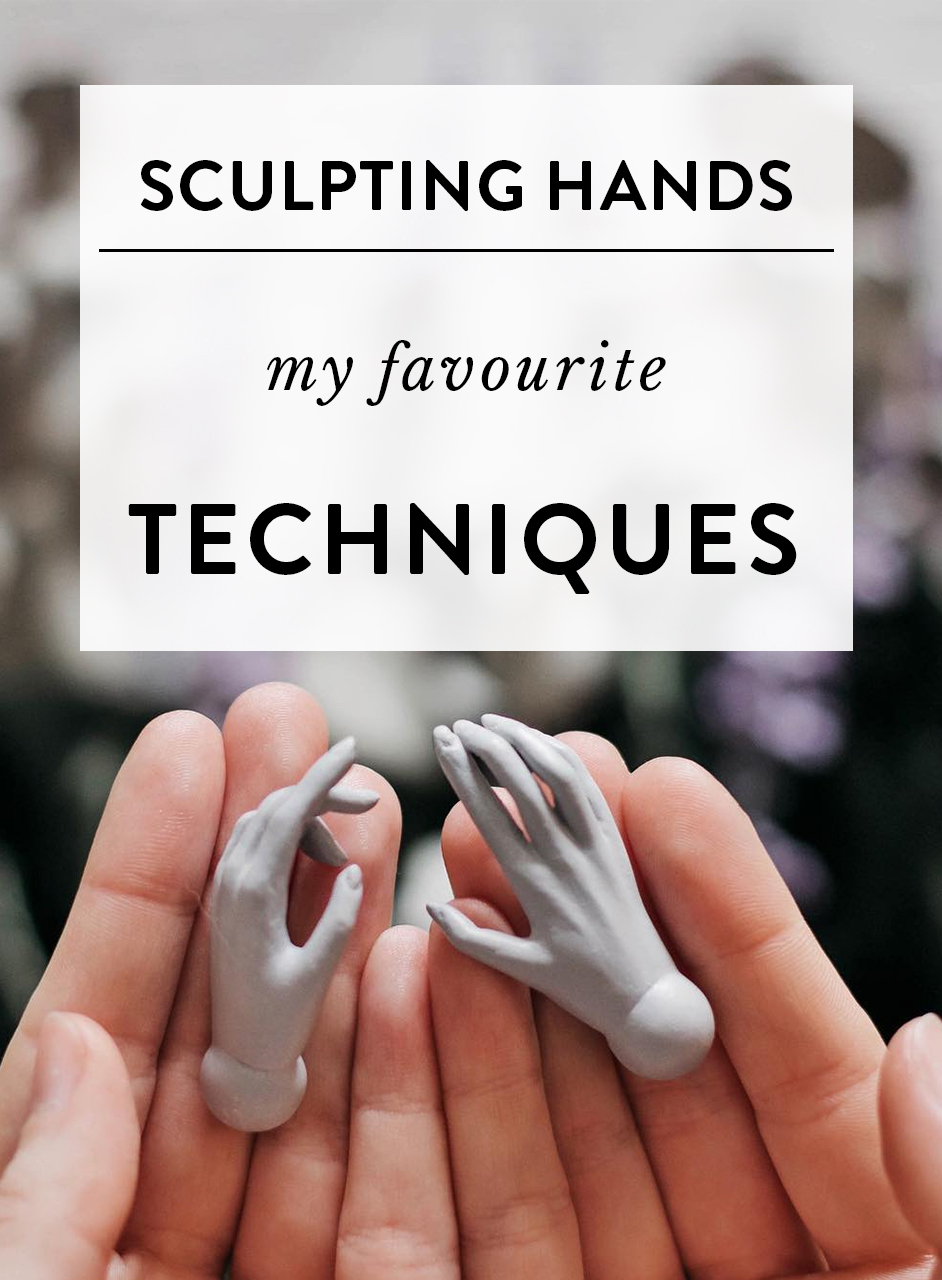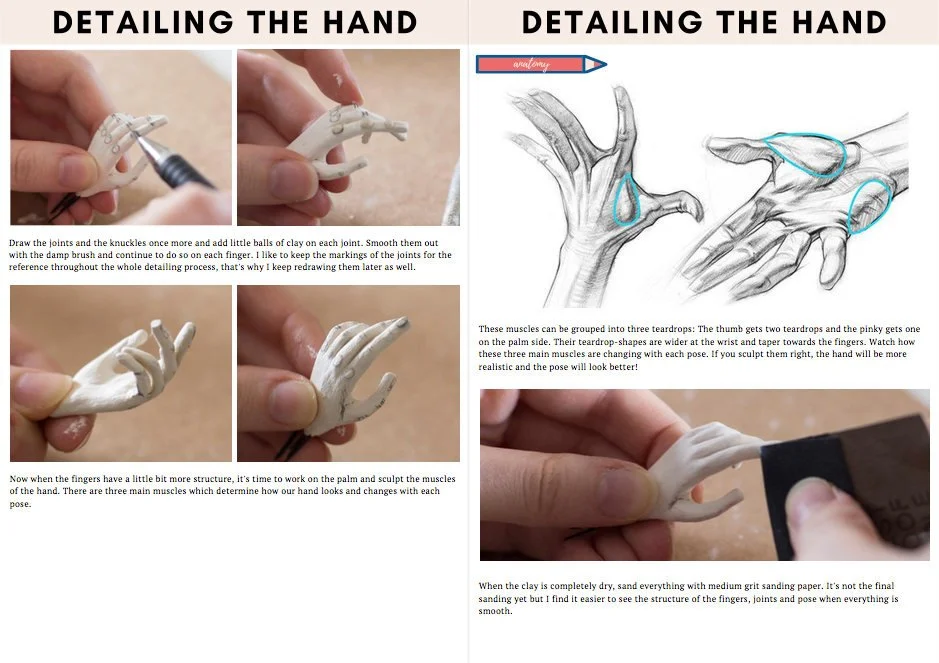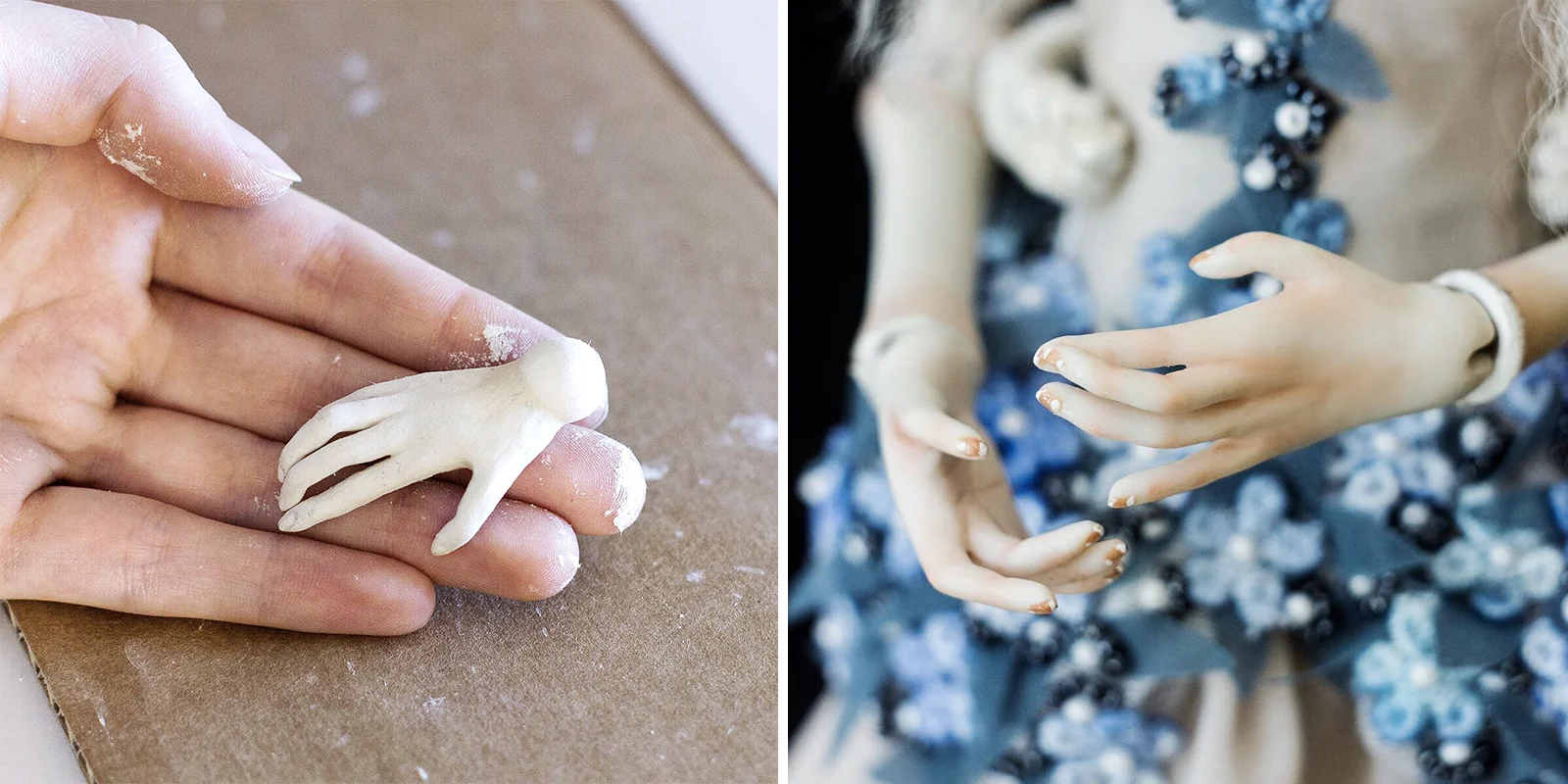Sculpting hands - my favourite techniques
Today I want to delve into the topic of sculpting hands. It's one of the hardest things to get it right when making dolls. And I completely understand why! I've sculpted dozens of hands and just about a year ago I finally got it right. So don't beat yourself up if they don’t turn out perfect every time. It's so common! In this article, we will talk about how the right materials will help to get better results and look into my favourite sculpting techniques. Let’s sculpt some hands!
This post contains affiliate links and I will be compensated if you make a purchase after clicking on my links. I wouldn’t promote anything I don’t absolutely love!
Materials
Good quality clay - I usually use “La Doll”, “Premier” or “Creative Paperclay”. You can read more about these clays in this article.
Very thin wire - It depends on the size of your doll but for small hands, you need quite thin, bendable wire. I use 22-24 gauge wire.
Soft brushes - for shaping and smoothing the clay.
Also, you’ll need wire cutters and pliers for bending the wire. Sculpting tools, PVA glue if you want to strengthen the air-dry clay, sanding paper, etc.
My favourite techniques
There are quite a lot of ways to sculpt hands, I’ve tried almost all of them and these two work great for me. Both of them include making wire armature and then sculpting the hands on top of it. Wire armature gives you the strong base to sculpt on and keeps the clay from breaking too easily.
First technique- making the full hand skeleton from wire and sculpting on top of it.
It works great on simple hand poses when the fingers are just slightly bent or straight. I like this technique because you can really see how the end result will look like. If you’ll make a good skeleton, you’ll just simply need to cover it with clay, add a few details and you’ll have a beautifully sculpted hand! Of course, there are a few obstacles along the way, but with a little bit of practise, you can overcome them easily. For example, it might be hard to reach all the nooks and crevices between the fingers. To make things easier, I’m usually using soft watercolour brushes instead of sculpting tools. With a brush and a little bit of water you can reach all the little gaps and smooth out the clay.
Second technique - making fingers separately and then attaching them to the hand.
This technique can be a little bit tedious. Sculpting small fingers is not an easy task. But with this technique, you can create very interesting and expressive hand poses.
Cut the wire into pieces just a little bit longer than the actual finger. Bend them into the position you have in mind. Don’t bend the wire if you’ve already added clay to it, the clay will break and just fall off. Also, it’s important to fully sculpt and sand the fingers before connecting them to the actual hand. It can be pretty hard to make these adjustments later, when the gaps between fingers are almost non-existent, haha.
If you need more help and thorough instructions, check out my hand sculpting tutorial. It’s 28 pages and more than 80 pictures of step by step guides, anatomy lessons and my favourite techniques for sculpting hands.
HAND SCULPTING TUTORIAL - EBOOK
FRUSTRATING AND REWARDING - INTRICATE ART OF SCULPTING HANDS
28 pages and more than 80 pictures of step by step guides, anatomy lessons and my favourite techniques for sculpting hands.
Tips and tricks
How to add clay on the wire
A lot of people finding this part of my sculpting tutorial the hardest. "The clay is too slippery and slides off the wire". "It gets too messy and I can't sculpt any fingers." I understand the frustration. Usually, it happens when you try to sculpt the whole finger right away. Try to just coat the wire with clay and not sculpt the fingers just yet. This thin layer of clay will help other layers to stick better. The main rule is to sculpt in thin layers and wait for each layer to dry!
If you still struggle with adding clay on the wire, try to wrap it with fine sewing thread. Add a little bit of PVA glue so it won't slide and then the clay should stick very well.
How to strengthen the clay
It’s true that air-dry clays can be a little bit brittle. I’ve already talked about it in the previous article but PVA glue and good armature can work wonders in terms of strengthening the clay. Mix PVA glue (white glue, Elmer’s glue) with water and use this mixture instead of clear water while sculpting. When the glue within the clay dries, it holds those tiny paper fibres strongly together. The piece will be harder to sand though.
How to sculpt more expressive hands
Having a photo reference helps me a lot with this issue. Hands can give your doll so much character! Consider choosing an interesting pose if you’re feeling comfortable enough to sculpt that. A few more tricks are to shape elongated fingers, sculpt lines, veins, skin folds, nails or elaborate knuckles. Detailing the hand should be your last step in the sculpting process. I like to wait for the clay to dry completely and then carve the details with a needle or pointy scalpel.
I hope you’ve found these tips useful. Check out my full, step-by-step hand sculpting tutorial if you need more help in this department! Also, you can ask questions in the comments and I’ll try to get back to you as soon as I can. If hands are still the hardest part to get it right, consider sculpting bigger hands. Usually, when the scale is a little bit bigger the same task is much easier. Good luck!
How to work with air-dry clay to get the best results?
I’ve been sculpting with air-dry clays for the past five years, during all this time I’ve accumulated a few tips and tricks to make the process easier and more enjoyable. I’m pretty convinced that air-dry clays are very friendly to beginners and can be pretty magical in the experienced hands. But there’re a few tricks to make it work better.









